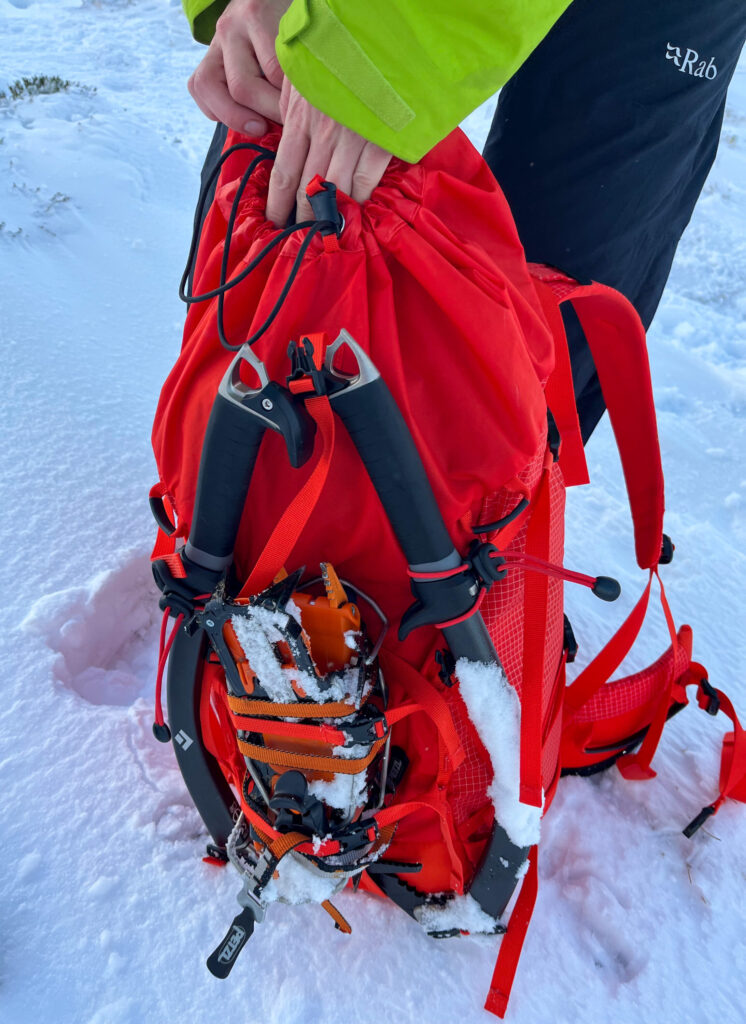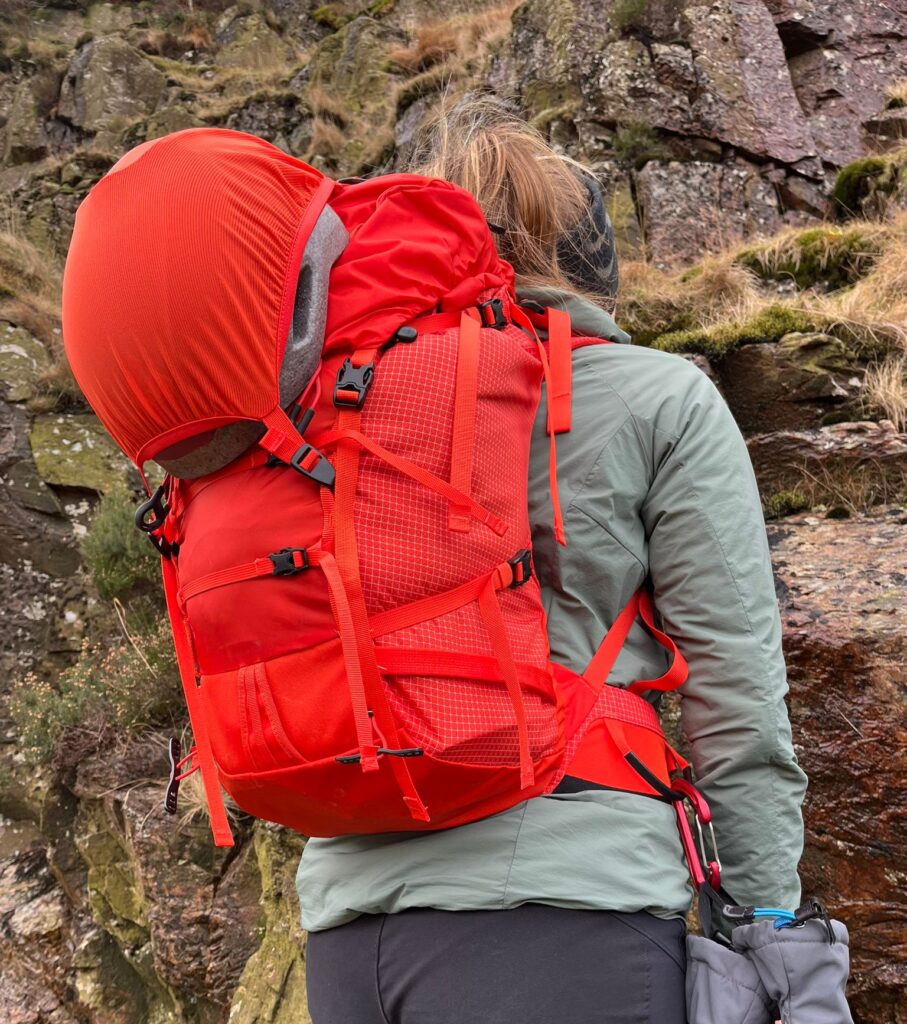Our Verdict
The Osprey Mutant 38 is a tough, incredibly adaptable and impressively water-resistant pack with climbing at the forefront of its design.
| RRP | £165 |
| Weight | 1.2 kg |
| Capacity | 38L |
| Dimensions | Height 68cm X Width 30cm X Depth 26cm |
| Features | NanoFly™ fabric, Dual ToolLocks, gear loops, rope and helmet carry, internal hydration sleeve, snowshed backpanel |
Pros
- Super durable
- Alpine-specific features
- Removable elements
- Narrow profile
- Versatile for all rock, ice and alpine climbing
Cons
- Loses some functionality when not packed full

What I’m Looking For
I’ve had a few Osprey packs over the years, from a monster 65L Aura AG that I lugged around Australia and New Zealand, to a svelte 2.5L Kitsuma that was my hands-free hydration system for local, lockdown wanders during COVID-19. My favourite is an aged Tempest 16, which is my go-to day pack for fell walking and is definitely testament to Osprey’s craftsmanship as it just keeps going.
I like to think I take a fairly minimalist approach to my gear, but I’ve definitely found backpacks to be a bit of a sticking point in this respect, you can’t really just have one pack that covers every activity. Sure, you might cover a few bases with a particularly versatile hiking pack, but when it comes to climbing, especially the colder variety, there are a few things your rucksack really does have to have.
With that in mind, I’m looking for a climbing pack that’s going to work for winter suffer-fests and the midgier, halcyon summer rock days as well. I need tool locks, gear loops and somewhere to store crampons on the outside of my bag as faff frustrates me deeply, which brings me neatly to; faff-free openings, closures, compressions straps and a convenient pocket for the things I need to keep handy. And speaking of handy, I really, really don’t want to have to take my gloves off to fasten or unfasten things if I can possibly avoid it. When the wind is gusting and you’re being smacked in the face with spindrift, the last thing you want is fiddly fastenings.
I need a tough, rugged rip-stop construction that can handle abrasion from hauling and squirming my way up esoteric chimney climbs, a slim profile that isn’t going to have me wedged in said chimney, and a comfortable, form-fitting back panel. Quite importantly, I like my climbing pack to compress down as much as possible once all the gear and ropes have been dumped out, the sandwiches have been eaten, and it’s time to climb.
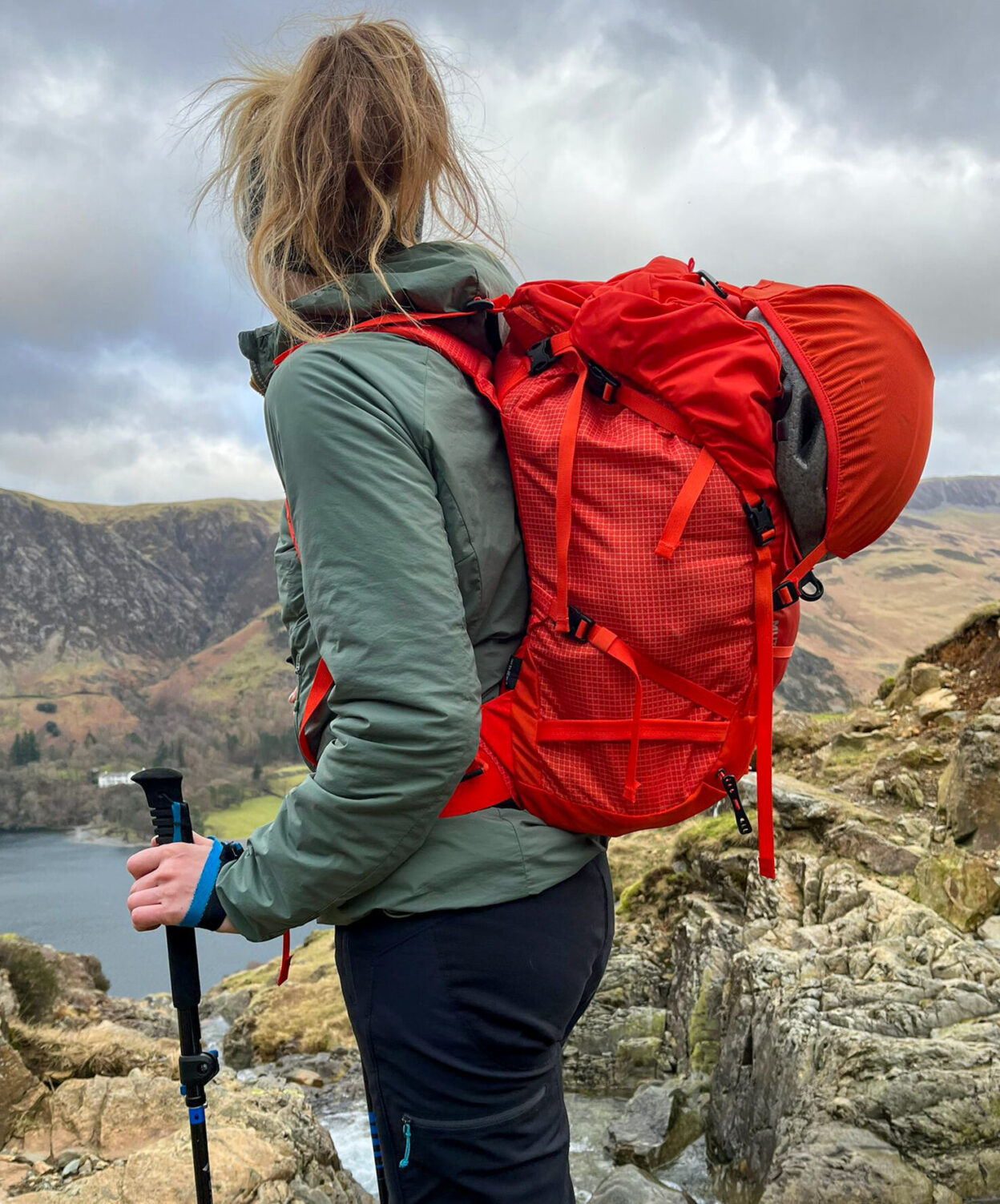

First Impressions
I’ve been testing the Mutant 38L in Mars Orange (which is a little more on the red end of orange and a great, highly visible hue for mountain activities) and a size S/M. The availability of size options is always a plus with Osprey, as an ill-fitting pack can really put a downer on your day. The Mutant fits me well in terms of length and width, and the waist belt sits so as to not press on my hip bones, something I’ve found to be a problem with unisex style packs in the past. The chest straps are moveable to suit your shape, or removable entirely, as are some of the other multiple straps on the pack.
I can’t decide if it feels a little over-engineered or in fact, just a very adaptable pack
It feels pretty light, lighter still when you remove the lid. There’s a flap jacket which protects the draw-cord opening if you decide to leave the lid behind, a helmet carry which can be attached to the top or front of the pack, a rope stay, gear loops to the waist belt and loop for your ice screw holder. There are definitely straps. I can’t decide if it feels a little over-engineered or in fact, just a very adaptable pack.
Osprey would not be the first brand that comes to mind if you said ‘climbing pack’ to me. I associate the brand more with hiking and backpacking, and my reservation with an Osprey climbing pack would be largely to do with the amount of straps and slightly surplus-feeling features their designs sometimes seem to have. That said, Osprey athlete Kristin Harila is a bit of a hero of mine, so if it’s good enough for her…
Whilst the straps are all useful elements on this pack, when pulled tight on a windy day there is definitely that familiar flapping to put up with. However, it looks good, feels robust and has everything I want and then some, so maybe my reservations were unfounded after all…
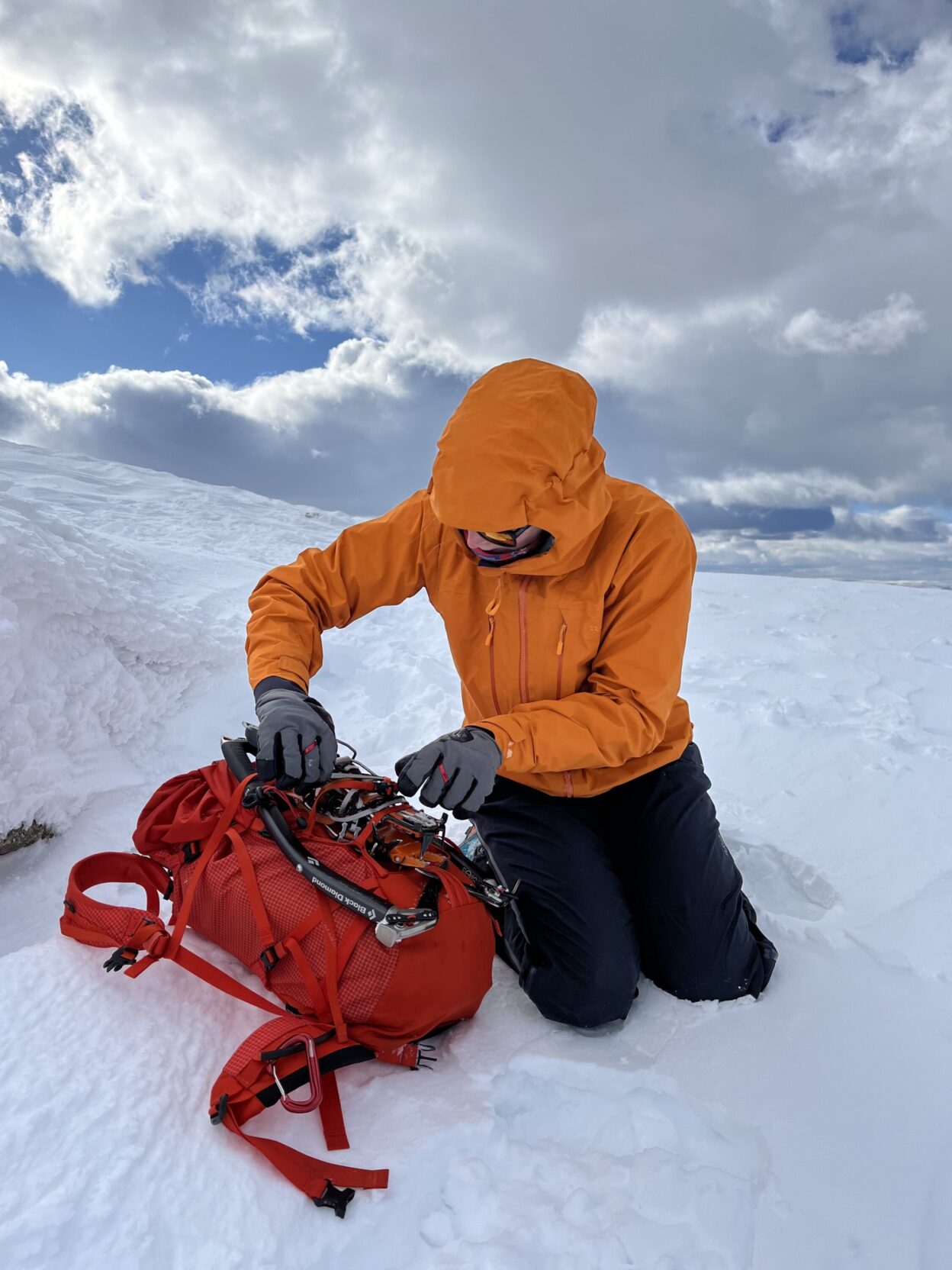
The Test
The Mutant has been my one and only climbing pack since the end of last year, venturing into Coire an t-Sneachda in the Cairngorms for some typically Scottish winter climbing, a rare ice climbing hit in the Lakes, a very alpine-feeling February day linking rock routes on Grey Crag above Buttermere, and laidback trad on Holyhead Mountain in North Wales.
It has been packed with a full-day’s worth of winter gear, axes and crampons, a rack and ropes (loaded both inside the pack and outside using the rope stay and hood) and has seen unseasonable sunshine, 60mph gusts and spindrift and everything in between. I’m fairly certain I’ve tested all of its storage capabilities with the exception of the reinforced A-frame ski carry and the hydration bladder sleeve, which I might use for hiking or for warmer climbing days, but in the corries the tube would inevitably freeze.
Who Is This Backpack For?
Osprey’s product tour video of the Mutant states that the range offers ‘a streamlined solution for any climber, any season and any destination‘, and that the packs have been designed and tested with athletes and local guides. The Mutant is available in 22, 38 and 52L capacities, as well as the 90L ‘Nimsdai’ pack, which was developed for Purja and his team’s winter ascent of K2.
Based on my experience of the 38L version of the Mutant, I’d say that this pack is for rock, ice and mixed climbers and mountaineers who value durability and a pack that can be adapted and modified to meet their needs. The removable lid means you can shed weight for a summit push, and detachable straps mean you can strip back the pack’s features if they’re surplus to your requirements. The DWR coating of the Mutant was particularly impressive in the rain and snow, so this isn’t just a pack for fair-weather mountaineers either.
this pack is for rock, ice and mixed climbers and mountaineers who value durability
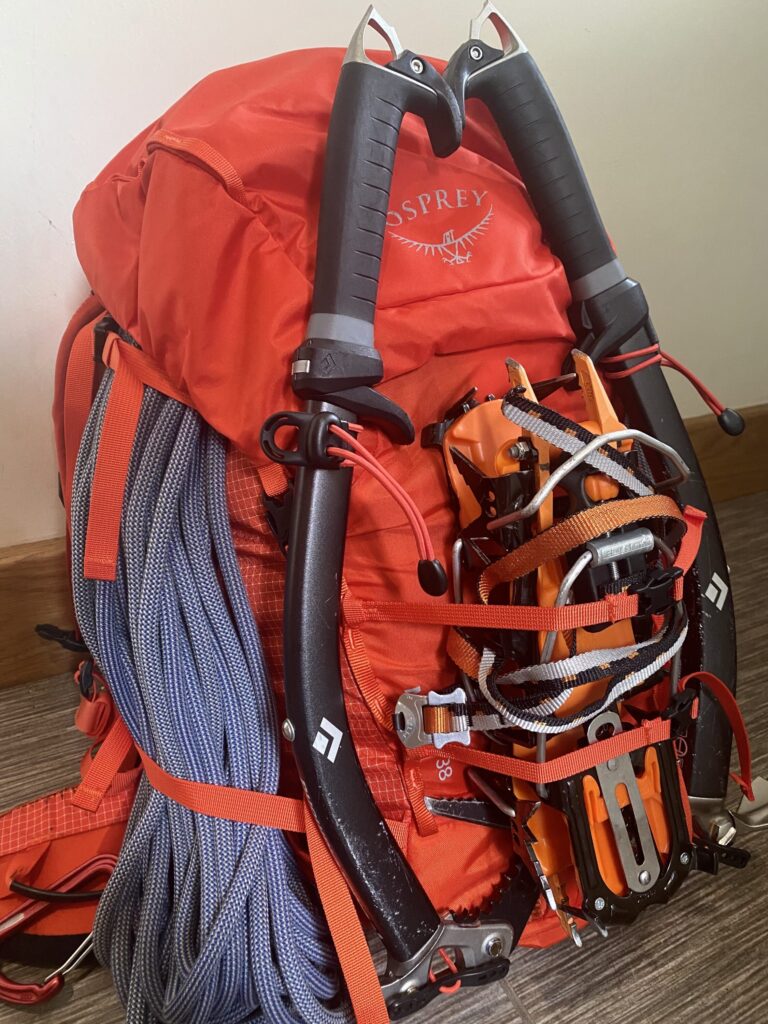
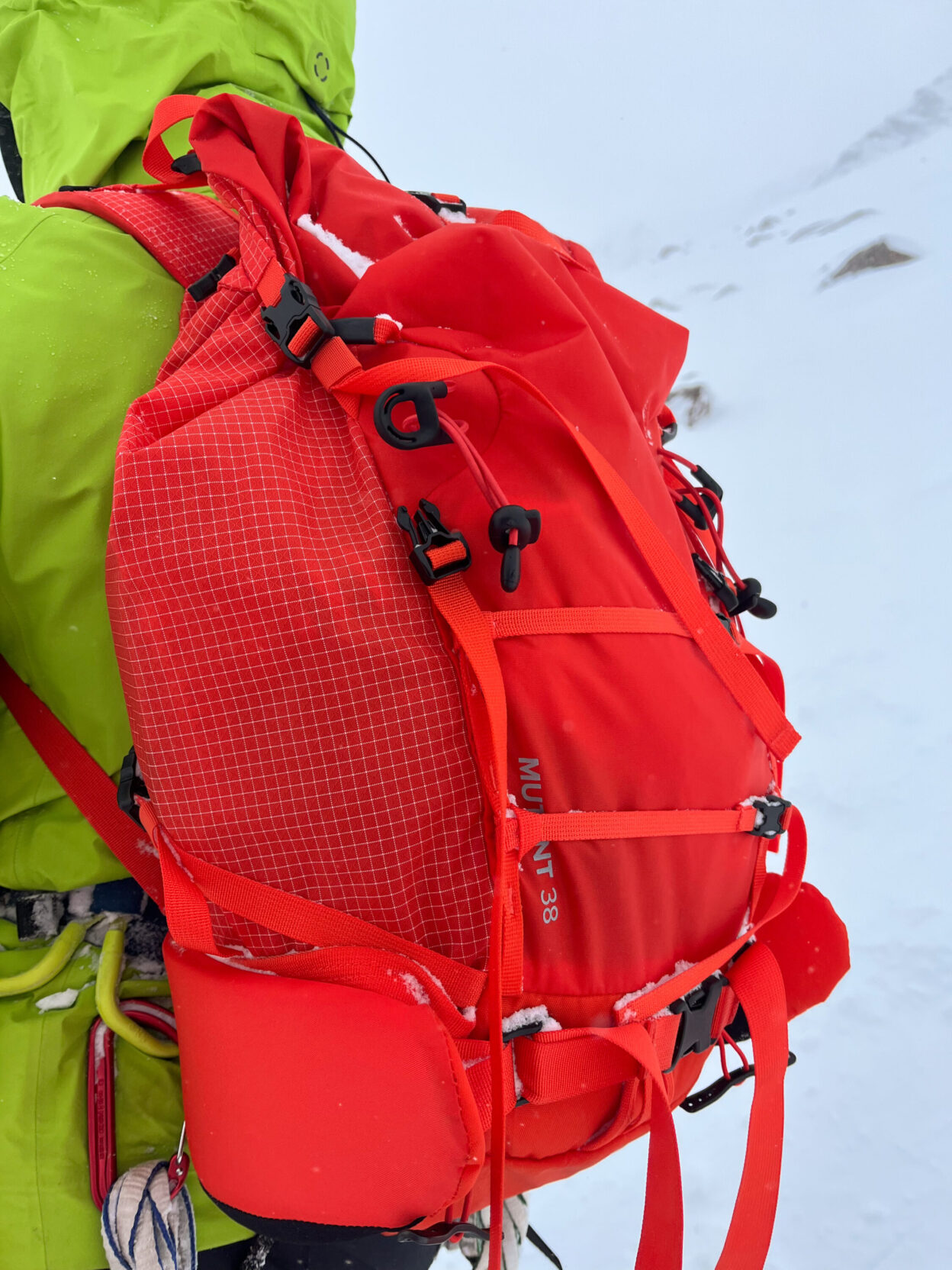
What Stands Out?
Comfort
I’m really chuffed with how comfy this pack has been so far. The Mutant comes with an Atilon framesheet and dual aluminium stays in the back panel which can be removed independently of each other if you like to travel really light or prefer less rigidity. Even without this, it was comfortable on a long day out.
Adaptability and Versatility
The Mutant easily transitions between single-pitch crag days to full-on winter excursions in the corries. Basically, you can set this pack up to suit how you like to carry your gear – helmet and rope inside or outside, lid or no lid, etc. – but if you already have a system that works, it might feel like some of these features are a bit surplus.
Water-repellency
Some brands profess to have decent water resistance in their packs, but proofing can come at a cost to weight and stretch in the pack’s fabric. The Mutant’s PFC/PFAS-free DWR coating does a brilliant job at keeping your stuff dry on wet and snowy days, but is still lightweight and has a decent amount of give.
Fill VS Functionality
Ok, this was the biggest pitfall of the Mutant for me. The pack performs brilliantly when it is packed, but once you’ve racked and roped up, I found it became frustratingly slouchy at the top and lost some of its functionality.
One a particularly gusty day in the Cairngorms, after I had taken out my gear, the lid seemed to hang loosely and move around on the top of the pack. Upon removing the lid, the draw cord fastening was exposed and sort-of collapsed into the pack, cue flap jacket deployment. Without the pack being full however, the flap jacket gaped too. The end result was quite an impressive gathering of snow on the top of the pack. The compression straps do pull the pack in neatly, but the issue with the top still remains.
Fit and Features
The slim shape, close-to-body carry and adaptable fit really did feel reassuring during tentative moments on ice and rock. The glove-friendly fastenings and simplicity of opening also meant you could access your pack fast and efficiently, and then get moving again!
Value For Money
The Mutant is pretty much spot-on what I would expect to pay for a technical pack of this volume. In fact, you get a little bit more bang for your buck if you’re a fan of features and multi-functionality. Whilst there’s never going to be a pack for every adventure, this once comes pretty close given its compatibility with all climbing disciplines. The Mutant’s impressive durability is certainly indicative of a very healthy lifespan, and the fit and sizing options ensure all day comfort on less-than-comfortable terrain!
BASE Bottom Line
The Mutant has more than proven itself to be an incredibly functional, tough and user-friendly climbing pack. If you’re not a fan of straps, loops and flaps, or prefer to have multiple packs for your various climbing disciplines, it may not be the one for you. The fill issue I found would likely not present a problem for those carrying larger loads, so give some thought to what capacity you’re likely to need if you’re considering giving a Mutant a go, the 38L will easily carry a little extra.
To conclude, I can confirm that the Mutant is NOT over-engineered. Rather, it is a highly adaptable and actually very cleverly made pack with climbing at the forefront of its design. The impressive water resistance, all-day comfort and versatility are all big wins for me, and my aforementioned reservations about Osprey as a climbing-specific pack brand have been firmly knocked on the head.
Don’t miss a single adventure
Sign up to our free newsletter and get a weekly BASE hit to your inbox
Other posts by this author
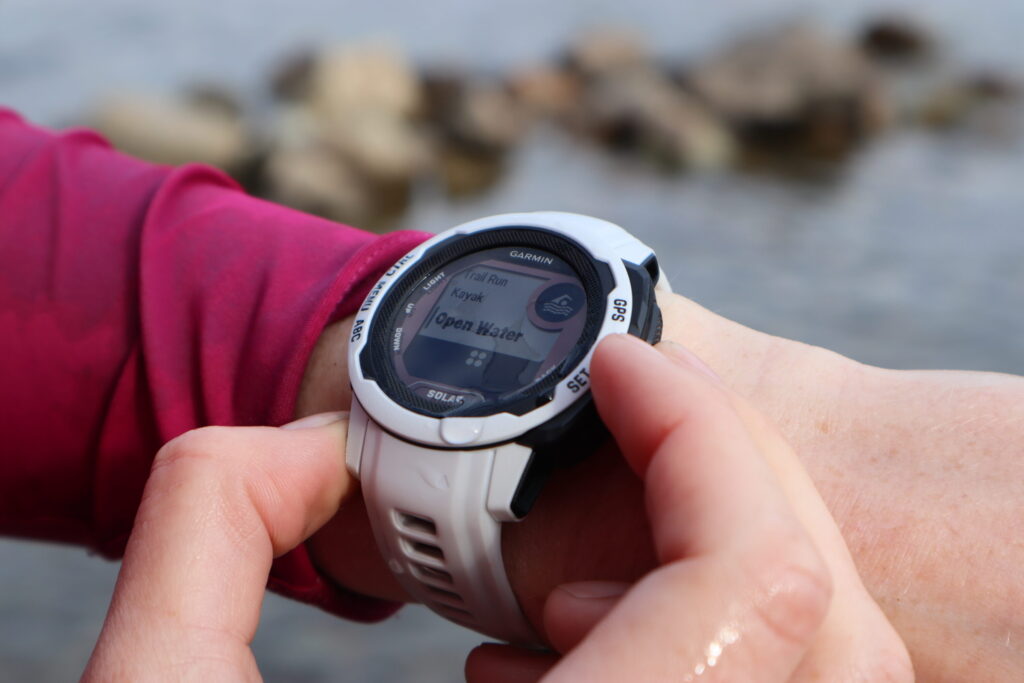
Review • Hannah Mitchell • Nov 13, 2023
Review: Garmin Instinct 2S Solar
Exceptional battery life and extensive activity tracking and metrics - the Instinct 2S Solar has a lot to offer in a neat, nifty little package.
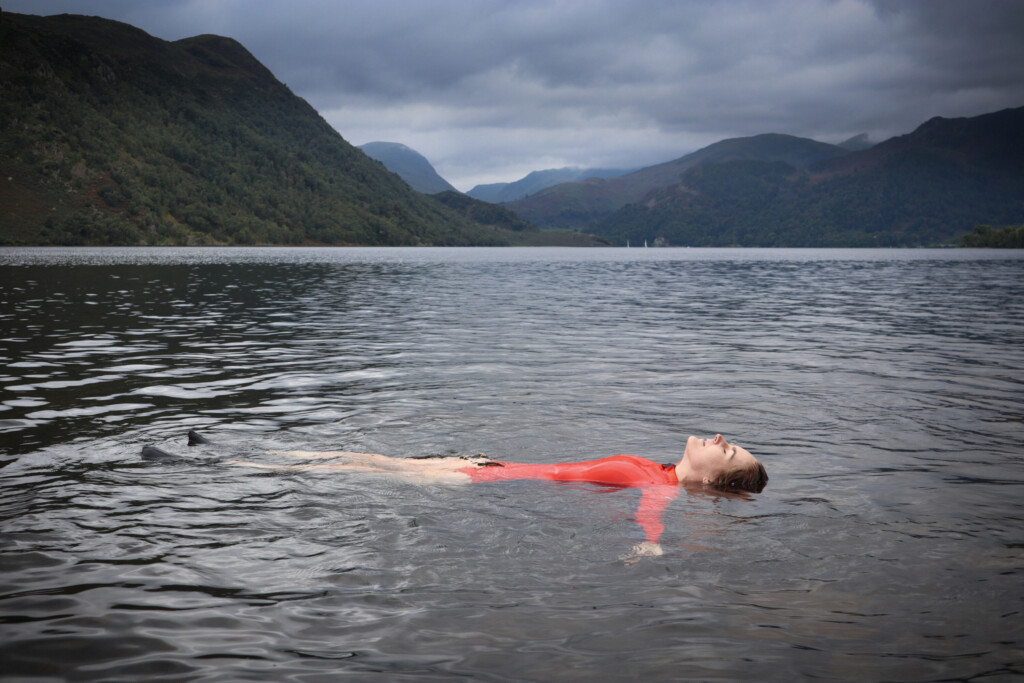
Review • Hannah Mitchell • Oct 24, 2023
How Good Is Finisterre’s New Wetsuit Rental Scheme?
Finisterre's scheme aims to improve accessibility to the sea by offering a more sustainable way to wear their Yulex surf and swimwear range
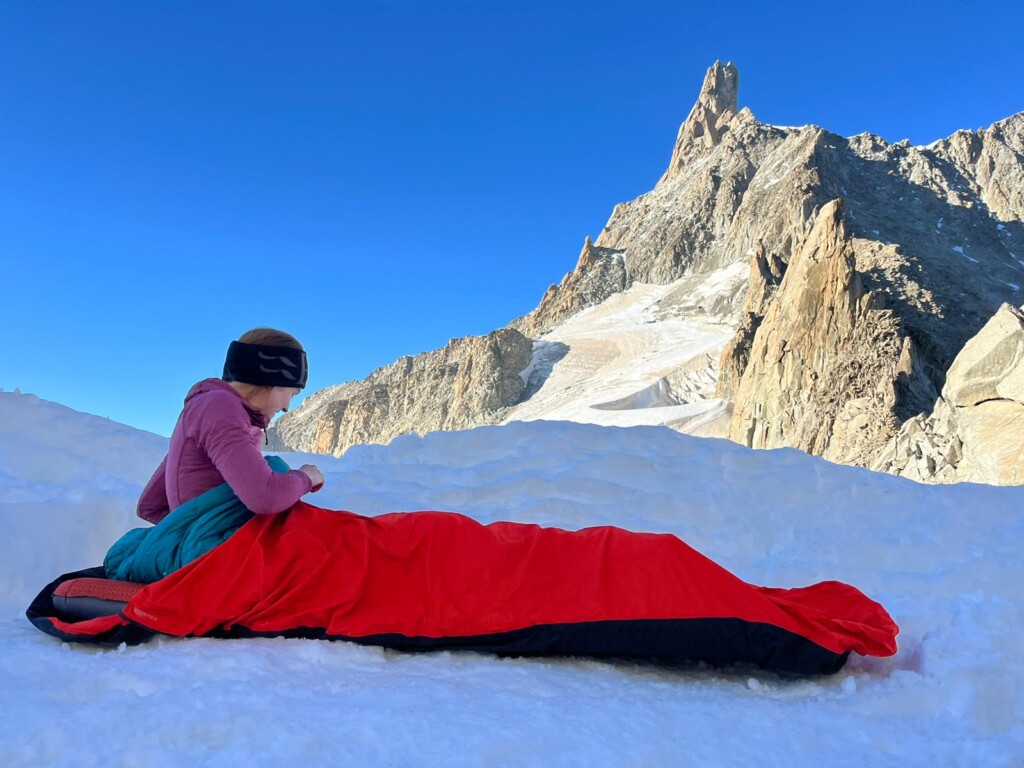
Review • Hannah Mitchell • Oct 04, 2023
Review: Rab Ionosphere 5.5 Sleeping Mat
Rab's Ionosphere 5.5 guarantees a warm, comfortable and quiet night for alpine bivies and camping in extreme conditions
You might also like

Review • Jonathan Doyle • Oct 11, 2023
Review: Montane Men’s Tenacity Lite Pants
A stretchy, resilient, and exceptionally comfortable pair of trousers suitable for mountain hikes, trekking and scrambling.

Review • Hannah Mitchell • Oct 04, 2023
Review: Rab Ionosphere 5.5 Sleeping Mat
Rab's Ionosphere 5.5 guarantees a warm, comfortable and quiet night for alpine bivies and camping in extreme conditions
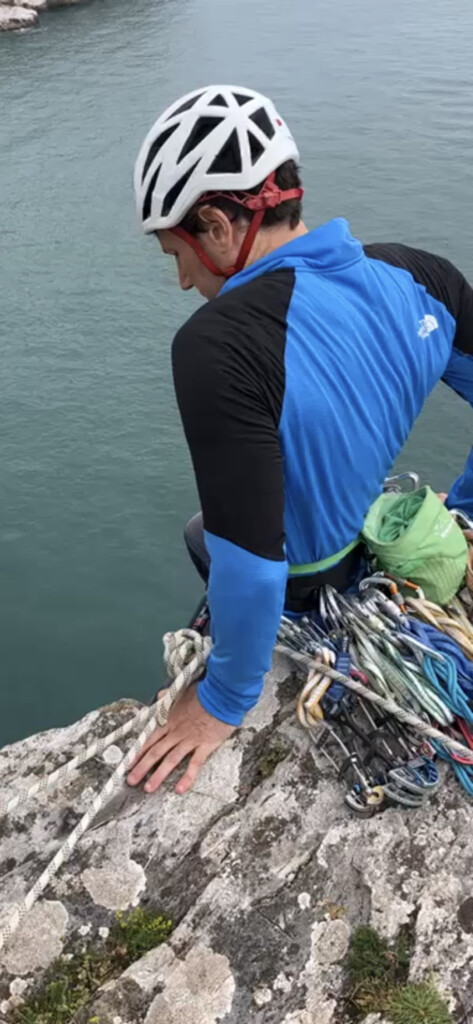
Review • Mark Bullock • Sep 19, 2023
Review: The North Face Bolt Polartec Jacket
A light, breathable, stretchy and versatile midlayer that is suitable for a variety of activities

